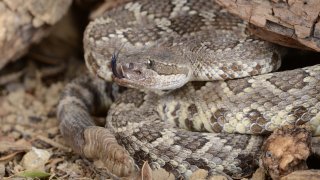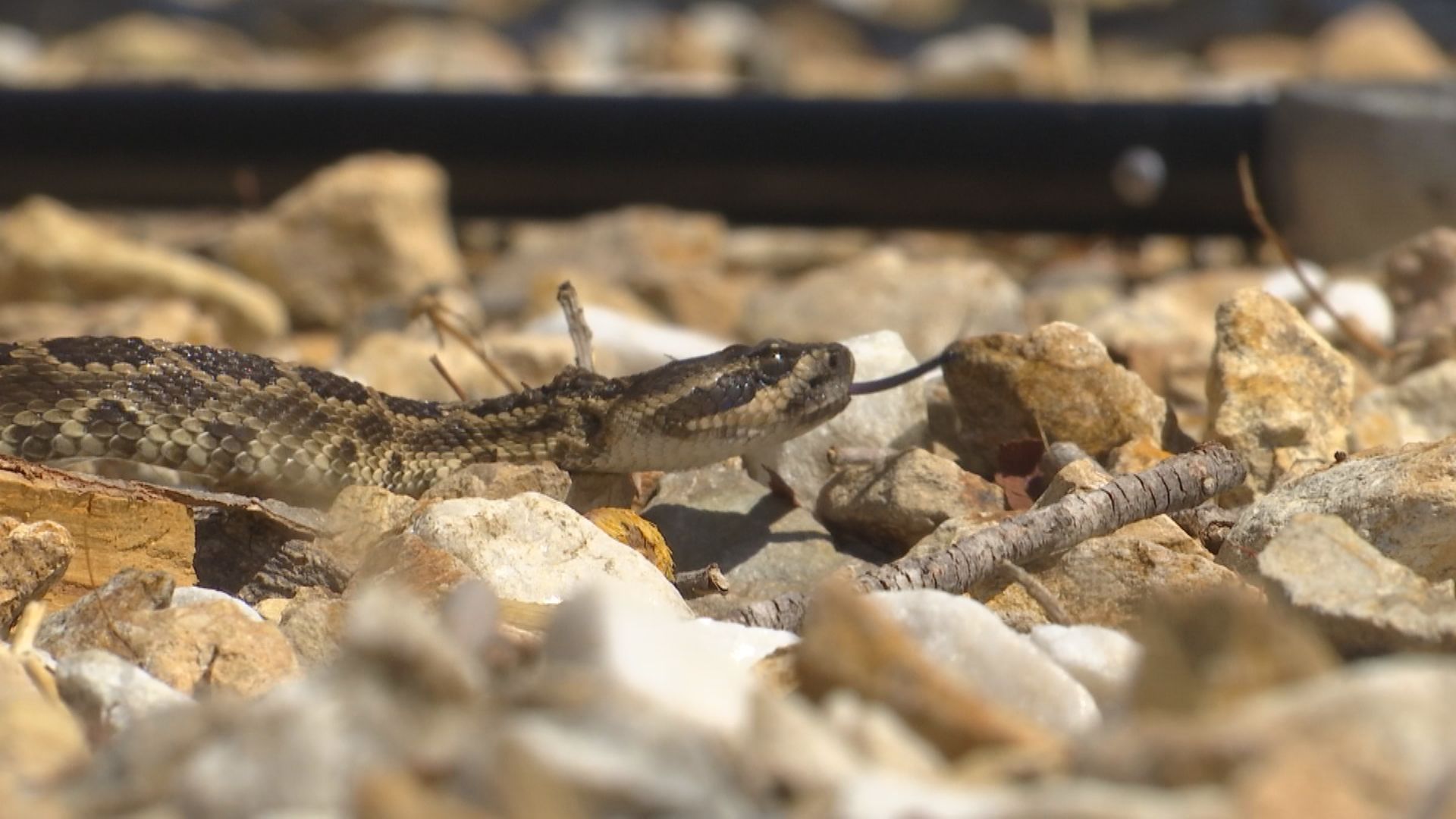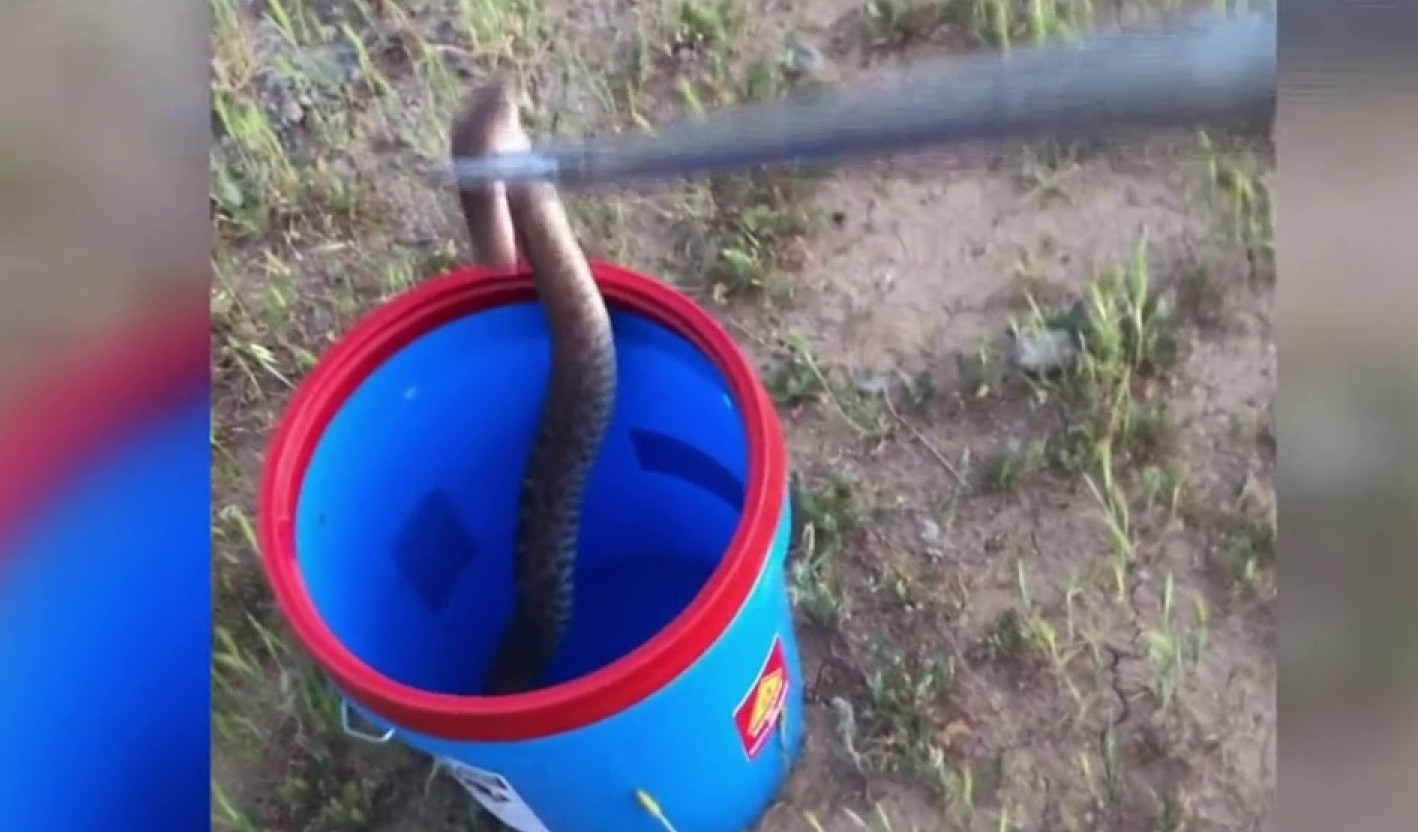
Rattlesnakes typically emerge from hibernation in the spring when temperatures are optimal in California. And while most are found in rural areas, snakes are also found in urban areas, parks, near homes, under wood piles, and near lakes.
So whether you plan to blaze a trailhead soon or just meander around your neighborhood, it's in you and your pet's best interest to review some safety guidelines for the venomous creatures.
How Do I Identify Rattlesnakes?
A rattlesnake has a triangular head and a rattle at the end of their tail. They may only be seen without a rattle if it's broken off.
Get San Diego local news, weather forecasts, sports and lifestyle stories to your inbox. Sign up for NBC San Diego newsletters.
This distinguishes them from the other similar-looking snakes, like non-venomous gopher snakes.
Their scales are not smooth but 'keeled' -- raised and textured -- and they are matte, not shiny.
They are colored in earth tones and the pattern of their scales resembles diamonds.
How Do I Avoid Provoking Rattlesnakes?
Despite the intimidating rattle and fear of being bitten, rattlesnakes are not aggressive and tend to avoid people. When they do bite, it's often because they were surprised.
However, you won't always get a warning from a snake with a rattle. They may remain silent before striking and that strike might also be a "dry bite," or one that is not envenomed. This is because creating and using venom is at a high energy expense for a snake.
Regardless, all bites should be taken seriously.
It's also important to note that snakes adjust their behavior to offset the effects of consistently hot or cold temperatures.
After a cold night, they will sun themselves midmorning to raise their body temperature. But to prevent overheating during the spring and summer months, they also tend to be more active at dawn, dusk and night.
Your takeaways:
- Stay vigilant.
- Stay on trails where you'll have a better chance of seeing and avoiding a snake.
- If you see one, don't panic. They will retreat if given enough space and if you do not provoke or approach them.
- Keep your pet on a leash in rattlesnake country. They are at an increased risk of being bitten by snakes because they sniff the ground when investigating new areas.
How to Handle a Bite
While bites are uncommon, those of a rattlesnake can result in serious injury or death.
And according to the U.S. Food and Drug Administration, 8,000 people are bitten in the U.S. every year by venomous snakes, resulting in 10 to 15 deaths.
If bitten by a rattlesnake, there are definite do's and don'ts.
Do:
- Stay calm.
- Act quickly.
- Remove anything that may constrict potential swelling in the affected area like watches, bracelets and shoes.
- Get to the hospital as quickly as possible or call 911.
Don't:
- Attempt to suck out the venom.
- Apply a tourniquet.
- Pack the bite area in ice.
- Cut in or around wound.
- Drink alcohol.
How to Handle a Bitten Pet
If your pet is bitten;
- Leave the snake alone.
- Move your pet away from the snake as quickly as possible, careful not to threaten the reptile.
- Call an emergency veterinarian immediately.
- Keep your pet in a comfortable position while you await further instructions, ideally keeping the bite lower than the heart.
- Get your pet to the vet right away.
- Speak to your vet about canine rattlesnake vaccines.
More Advice on Keeping Safe in Rattlesnake Country
- Never go barefoot through brushy areas. Wear sturdy shoes, not flip-flops, and long pants.
- Make sure children also have proper footwear in the wild and watch over them on hikes.
- Do not hike alone.
- Stick to well-used trails.
- Do not stick your hands in places you can't see. Be especially careful when climbing or gathering firewood.
- Visually check all surroundings before sitting down or setting up camp.
- Rattlesnakes can swim; don't grab what appear to be twigs or branches in the water.
- Watch your step at doorsteps; snakes like to slither along the edges of buildings.
- Do not approach or mess with a dead snake as it can still inject venom.
Further information on rattlesnake safety can be found by following this link.




